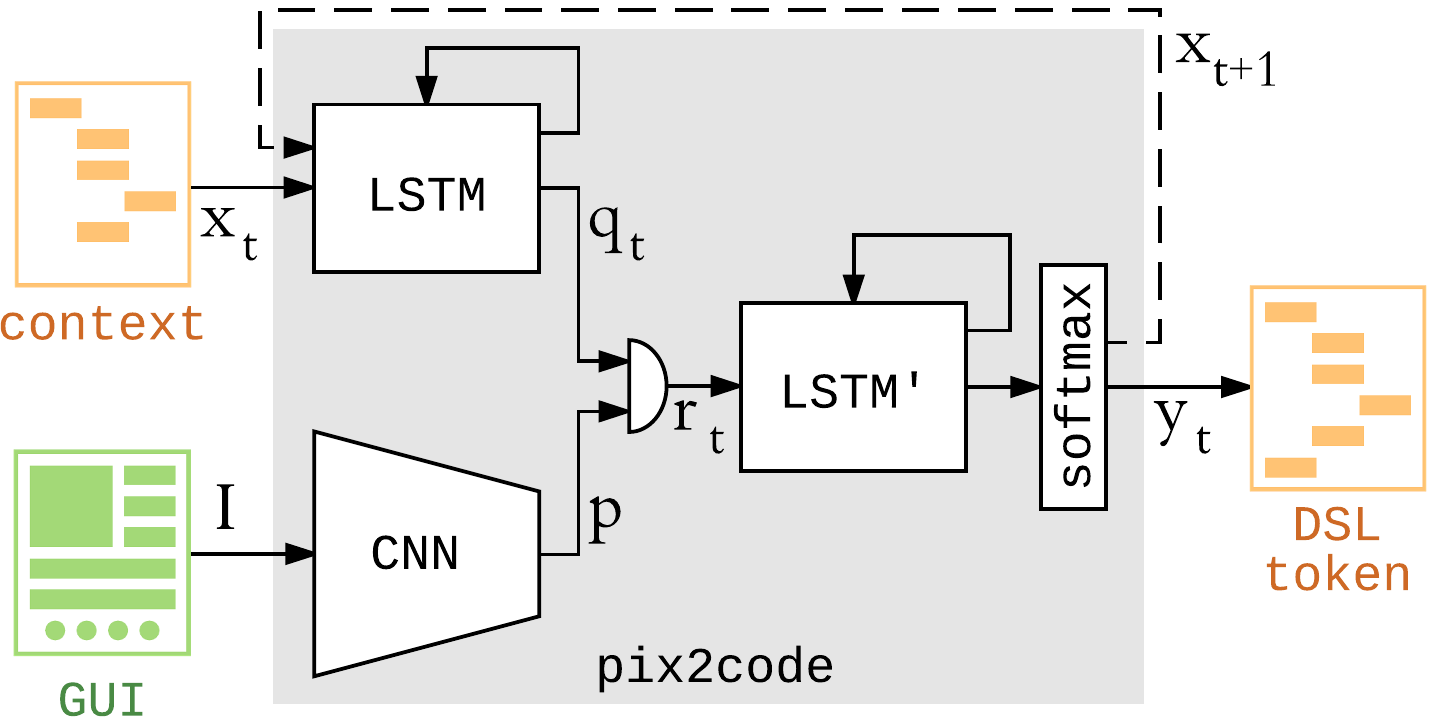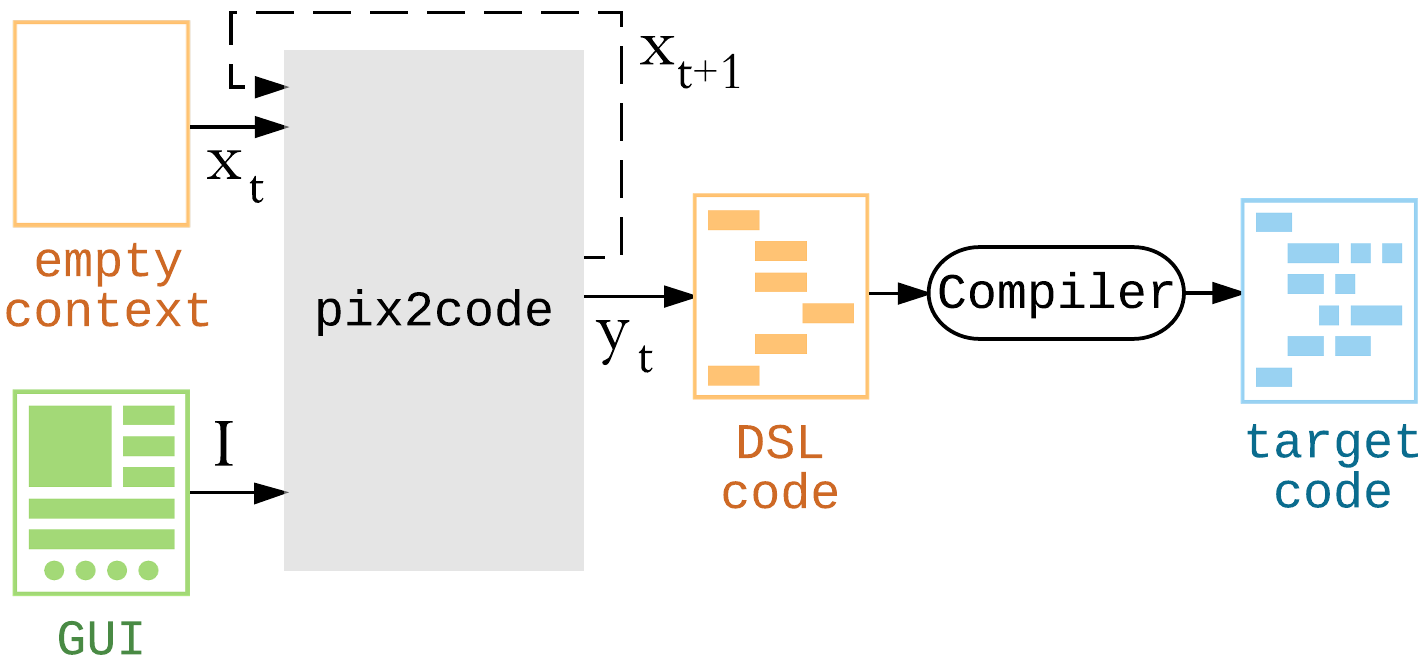# paper reading notes
# pix2code: Generate Code from a Graphical User Interface Screenshot
similar to a image caption task
easy to create a lot of training data
use DSL as a smaller hypothsis space, one hot encode DSL tags


# Semi-supervised Knowledge Transfer for Deep Learning from Private Training Data
teachers trained on disjoint private data
students learn to predict by noisy voting from the teachers
model overfit and memorize data, attackers use hill-climbing from output probability, reveal real faces from dataset
strengthen this ensemble method by limited number of teacher votes, andy pick only topmost vote, after adding random noise
differential privacy
privacy loss
moment accountant
# Making Neural Programming Architectures Generalize via Recursion
$$ s_t = f_{enc}(e_t, a_t) $$ $$ h_t = f_{lstm}(s_t, p_t, h_{t-1}) $$ $$ r_t = f_{end}(h_t), p_{t+1} = f_{prog}(h_t), a_{t+1} = f_{arg}(h_t) $$
: time-step : state : domain-specific encoder : environment slice : environment arguments : core module : hidden LSTM state : decode return probability :
# Understanding Deep Learning requires rethinkng generization
regularization does not stop overfitting data with random labels
SGD has implicit regularization
capacity control
matrix factorization
parameters memorize the datasets
optimization on random labels
model fit on Gaussian noise
# Using Morphological Knowledge in Open-Vocabulary Neural Language Models
mixture model, with
word model with finite vocabulary
char based model, dealing with UNK and subword structures
morphs model with max pooling on multiple morphes vectors, marginalize on multiple sequences of abstract morphemes
$$ p(w_i \vert h_i) = \sum_{m_i = 1}^M p(w_i, m_i \vert h_i) $$ $$ = \sum_{m_i=1}^M p(m_i \vert h_i)p(w_i \vert h_i, m_i) $$
as seen above, models are weighted to compute the probability of
three word embeddings are concatednated and used as inputs, char embedding captures dative like Obame in Russian fro Obama; morphmes embeddings are max-pooled when different structures are find(say does can be decomposed as do+3-person+singular, or doe+plural)
# morphological disambiguation
# Learning to Map sentences to Logical Form: Structured Classification with Probabilistic Categorial Grammers
constants: map entities, numbers, or functions to a value
logical connectors:
- conjunction
- disjunction
- negative
- implication
quantification
- universal, any
- existential
- count
- argmax
- argmin
- definite l(lambda) reutrn the unique set for which the lambda exp is true
lambda exp
# CGG(combinatory categorial grammer)
functional application rules a/b b = a b a\b = a
functional application rules with semantics
# MEASURING THE INTRINSIC DIMENSION OF OBJECTIVE LANDSCAPES
- theta^D = theta_0^D + P theta^d
- invariant to model width and depth, if fc layers
- 90% performance as a threshold for intrinsic dimension
- for RL task, performance is defined as max attained mean evaluation reward
- 750 dimension for MNIST, invariant for fc layer, variant for convolution layers(measured on shuffled labels)
- dense / sparse / fastfood random matrix
# ORDERED NEURONS
forget gate and input gate defined by binary sequence, trainable by counting
overlap of forget and input shows structure
# FeUdal
(1) transition policy gradient,
(2) directional cosine similarity rewards,
(3) goals specified with respect to a learned representation
(4) dilated RNN.
# Simese Network
learn feature from verification task(same or different images), then one-shot learning new category and test images, using max likelihood
# UNDERSTANDING THE ASYMPTOTIC PERFORMANCE OF MODEL-BASED RL METHODS
optimal planning horizon can be over 100 steps
combining model-based and model-free
- augment a model- free method with a model for faster learning
- make up for the asymptotic deficiencies of a model-based method by transitioning to model-free.
action-conditional predictor plan-conditional predictor